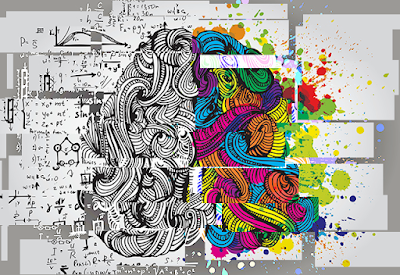
Human evolution separated from the chimpanzees 5.5 million years ago when we walked upright and then acquired language abilities. Language ability developed after 'lateralisation', the separation of brain functions into the left (sequential) and right (parallel processing) hemispheres. The peculiar delusions and hallucinations of schizophrenia can be understood as failure of the complex brain mechanism that enables the speaker to distinguish his thoughts from his speech or that of others. This brain mechanism evolved with lateralisation of brain functions. Loss of brain laterality in schizophrenia has been demonstrated.
Comparison of the gene sequences of early humans and their close evolutionary relatives, the Neanderthals have shown that regions of the human genome that underwent positive selection are enriched by association with schizophrenia. This suggests that schizophrenia susceptibility factors may be a "side effect" of human achievements like language and creative thinking.
Recent evolutionary modifications in brain wiring and connections may have played a role in the development of schizophrenia in humans. Compared to our closest living relative the chimpanzee, brain connections present only in humans show a higher involvement in schizophrenia. Evolutionary changes in the human brain related to supporting more complex brain functions are paralleled with a higher risk for brain dysfunctions that can manifest as schizophrenia.
However, this genetic susceptibility is actually reducing. A study comparing modern-human-specific gene sites with archaic ones has shown that schizophrenia-risk related genes in modern humans are much less than those in Neanderthals and Denisovans (archaic humans). So negative selection of schizophrenia risk-related genes are probably being gradually removed from the modern human genome.
However, this genetic susceptibility is actually reducing. A study comparing modern-human-specific gene sites with archaic ones has shown that schizophrenia-risk related genes in modern humans are much less than those in Neanderthals and Denisovans (archaic humans). So negative selection of schizophrenia risk-related genes are probably being gradually removed from the modern human genome.
References
- https://en.wikipedia.org/wiki/Human_evolution
- Crow TJ. Is schizophrenia the price that Homo sapiens pays for language? Schizophr Res. 1997;28(2-3):127–141. doi:10.1016/s0920-9964(97)00110-2
- Crow TJ. Schizophrenia as the price that homo sapiens pays for language: a resolution of the central paradox in the origin of the species. Brain Res Brain Res Rev. 2000;31(2-3):118–129. doi:10.1016/s0165-0173(99)00029-6
- Srinivasan S, Bettella F, Mattingsdal M, et al. Genetic Markers of Human Evolution Are Enriched in Schizophrenia. Biol Psychiatry. 2016;80(4):284–292. doi:10.1016/j.biopsych.2015.10.009
- van den Heuvel MP, Scholtens LH, de Lange SC, et al. Evolutionary modifications in human brain connectivity associated with schizophrenia. Brain. 2019;142(12):3991–4002. doi:10.1093/brain/awz330
- Liu C, Everall I, Pantelis C, Bousman C. Interrogating the Evolutionary Paradox of Schizophrenia: A Novel Framework and Evidence Supporting Recent Negative Selection of Schizophrenia Risk Alleles. Front Genet. 2019;10:389. Published 2019 Apr 30. doi:10.3389/fgene.2019.00389

